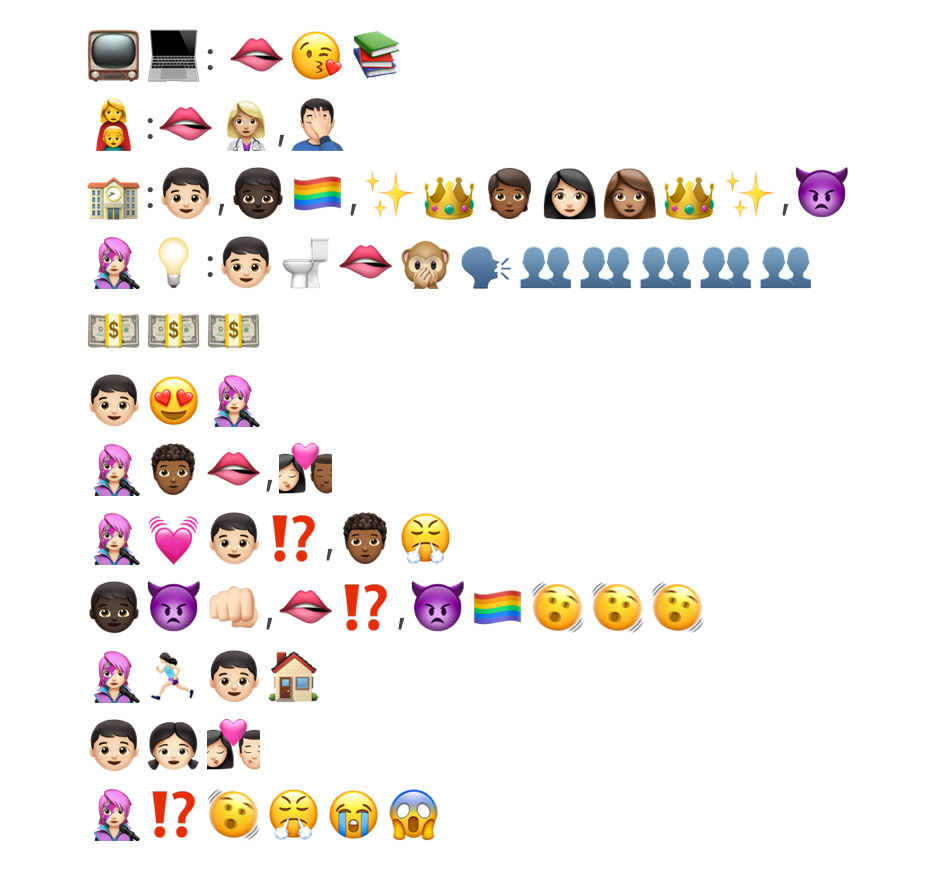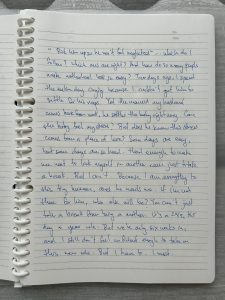My Task 4 and Task 4 by Anne George
When I think of unscripted manual writing, diary/journal writing is one of the first things that come to my mind. In terms of content for this task, both of Anne and I reflected on our lives and mood at the moment in the form of a diary/journal entry. While the two of us type more than we write manually in our day-to-day lives, both of us did not find the task too difficult or challenging.
Anne also mentions the legibility of her writing in this task, which is something that I did not mention in my post but did think about when doing the task; the more I wrote, the messier my writing became.
While we both used pens for this task, the mistakes I made were not visible post-production since I used a friction erase pen. Had I used a normal pen like Anne, my manual script would have also had words crossed out.
It is interesting to see the differences in our analyses when discussing writing by hand and mechanized writing. I mention how writing by hand is more spontaneous and raw compared to mechanized forms of writing like typing, whereas Anne explains the differences in reproducibility and accessibility between the two forms of writing.
References
George, A. (2023, October 1). Task 4: Manual Scripts and Potato Printing | ETEC 540 — Anne George. https://blogs.ubc.ca/annegetec540/2023/10/01/task-4-manual-scripts-and-potato-printing/
Huang, D. (2023, October 1). Task 4: Manual Scripts — Didy’s Webspace. https://blogs.ubc.ca/etec540ddhng/2023/10/01/task-4-manual-scripts/




